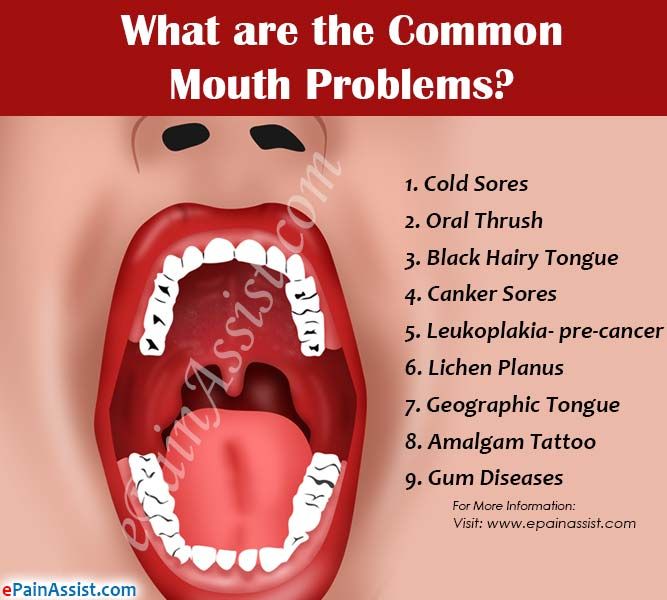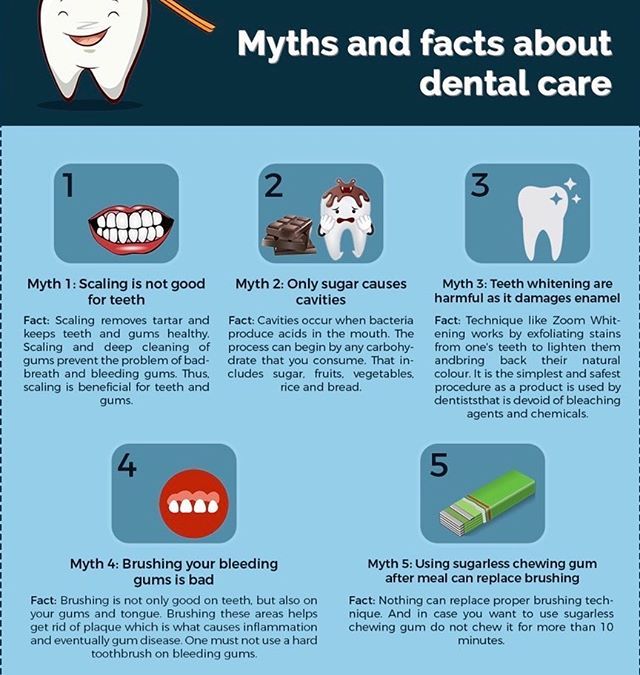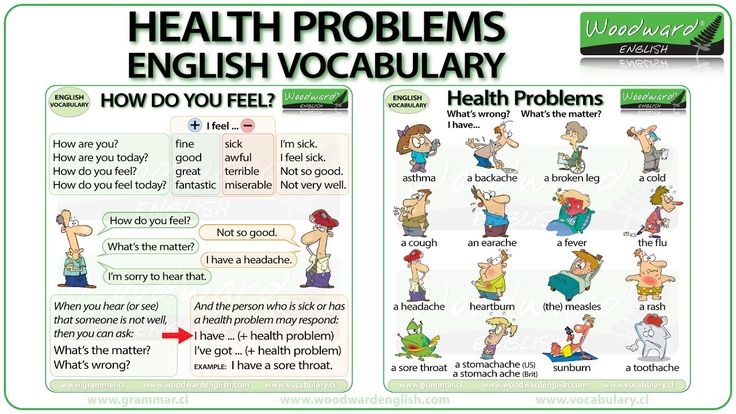Newborn yellow discharge eye
Is it normal and how to treat it?
Eye discharge is common in newborns and typically occurs due to a blocked tear duct. However, parents and caregivers can often treat this at home.
Eye discharge is typically harmless and self-resolving. However, discharge that occurs alongside other symptoms in the eye area, such as swelling or tenderness, could indicate an infection or another eye problem. A parent or caregiver of a newborn with these symptoms will need to consult a doctor.
This article discusses how common eye discharge is and explains how to treat it at home. We also cover medical treatment, other causes, complications, and when to contact a doctor.
Eye discharge in newborns is common and rarely a cause for concern. A common cause of eye discharge is a blocked tear duct.
According to the American Academy of Ophthalmology, almost 20% of newborns have a blocked tear duct. This condition can occur because the end of the tear duct does not open properly when the baby is born.
Tears form in the lacrimal gland, which sits just above the eye. Tear fluid helps clean and lubricate the surface of the eye. When a person blinks, the eyelids sweep the tear fluid into these ducts, which drain it into the nose.
If something blocks a tear duct, fluid may no longer be able to drain away from the eye’s surface. Blockages can cause very watery eyes, and sticky discharge may form in the corners.
Learn more about blocked tear ducts.
Blocked tear ducts are a common cause of eye discharge in infants. However, other conditions and factors can also cause discharge.
Conjunctivitis
Eye discharge in newborns can also be a sign of conjunctivitis or pinkeye. Conjunctivitis is an inflammation of the conjunctiva, a thin membrane that protects the front of the eye. Unlike a blocked tear duct, conjunctivitis often causes the white part of the eye to appear red.
Symptoms of conjunctivitis in newborns can include:
- drainage or discharge that develops between 5 and 12 days after birth
- puffy or tender eyelids, often with skin discoloration
- red, irritated eyes
Conjunctivitis in newborns can sometimes occur alongside a blocked tear duct. However, a pregnant person can also pass on a bacterial or viral infection to their baby when giving birth, leading to conjunctivitis.
However, a pregnant person can also pass on a bacterial or viral infection to their baby when giving birth, leading to conjunctivitis.
Learn more about the symptoms of eye infections.
Chemical irritation
Chemical irritation can also cause conjunctivitis in newborns. Healthcare professionals often give antibacterial eye drops to newborns to prevent infections. These eye drops can sometimes cause irritation that can result in conjunctivitis symptoms.
Learn more about eye irritation.
If the eye discharge is due to a blocked tear duct, it will usually resolve without treatment within 4–6 months.
However, wind, cold weather, and strong sunlight can also worsen symptoms, so a parent or caregiver should aim to protect a newborn’s eyes from these elements.
Clearing discharge
A parent or caregiver can often treat a newborn with a blocked tear duct at home. Before touching the area close to the child’s eyes, it is essential to wash the hands with soap and warm water to prevent infections.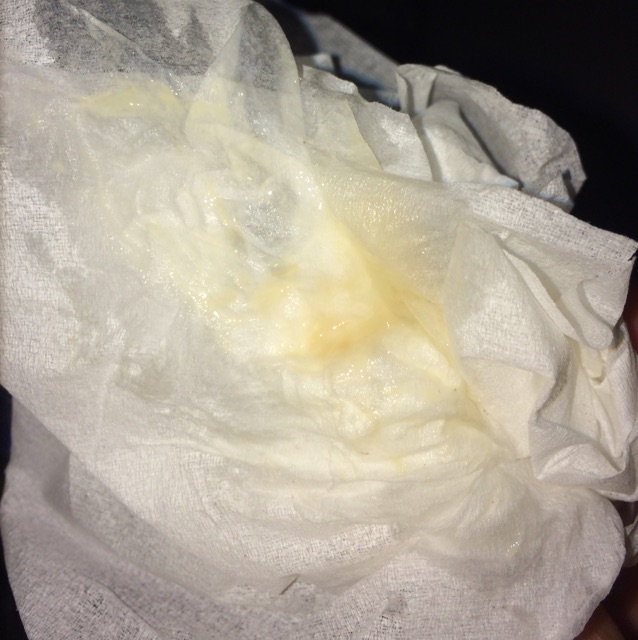 A person should also take care to rinse the hands thoroughly after cleaning them to avoid getting soap in the baby’s eye.
A person should also take care to rinse the hands thoroughly after cleaning them to avoid getting soap in the baby’s eye.
To clear away discharge, dip a clean piece of gauze or soft cloth in some lukewarm water, then gently wipe the corner of the eye. If a blocked tear duct affects both eyes, always use a new area of the cloth or gauze to clean the other eye.
Tearduct massage
A doctor may also recommend gently massaging the blocked tear duct to help it open, and they will demonstrate how to do this safely.
To massage the tear duct:
- Lightly press the tip of the index finger against the inside bridge of the newborn’s nose, on the side of the blocked tear duct.
- Make 2 or 3 short downward strokes with the finger along the side of the nose. These should be gentle but firm.
- Perform the massage twice a day — once in the morning and once in the evening.
If the side of the newborn’s nose becomes red or swollen, stop the massage immediately and contact a doctor.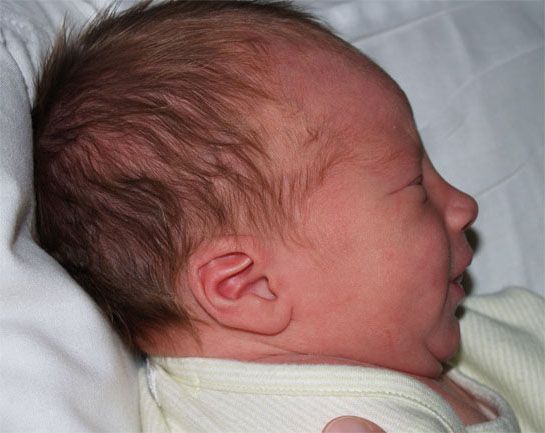
In newborns, blocked tear ducts tend to open up within several months of birth. However, medical intervention may be necessary in some cases.
Surgery
If the blockage has not gone away by the baby is 1 year of age, a doctor may recommend a medical treatment called a nasolacrimal duct probing.
This procedure involves inserting a small probe into the infant’s tear duct. By using probes that gradually increase in size, a doctor will be able to open up the tear duct. They will then use a saline solution to flush out any remaining debris.
Sometimes, the doctor may also insert a small tube, or stent, into the duct to keep it open.
Probing is usually successful in opening the tear duct. For children with a severe blockage, a doctor may recommend a more complicated surgical procedure called a dacryocystorhinostomy to clear out and open the tear duct.
Antibiotics
If an infection is causing eye discharge, the newborn will need prompt medical attention. To treat cases of infectious discharge, a doctor may prescribe topical, oral, or intravenous antibiotics.
To treat cases of infectious discharge, a doctor may prescribe topical, oral, or intravenous antibiotics.
Blocked tear ducts can sometimes lead to an infection called dacryocystitis. Symptoms of this condition may include:
- excessive thick discharge from the eye
- redness in the corner of the eye
- a tender bump or swelling at the side of the nose
- fever
If a newborn has any of these symptoms, a parent or caregiver should consult a doctor.
Newborns with eye discharge or very watery eyes should speak with a pediatrician or an eye doctor specializing in children, called a pediatric ophthalmologist. These healthcare professionals can diagnose the cause of the discharge and check for signs of infection.
Parents or caregivers should seek medical attention if an infant’s eye discharge persists for more than 6 months.
Newborns with signs of an eye infection require immediate medical attention. Signs of an eye infection can include:
- sore or puffy eyes
- swollen eyelids
- yellow or green pus or discharge
- a bump or swelling on the inside corner of the eye
If a parent or caregiver notices any of these symptoms, they should contact a doctor immediately.
Eye discharge in newborns is common and often results from a blocked tear duct. The blockage will usually clear up by itself within 4 to 6 months.
However, newborns with eye redness, eye discharge, or excessive watering of the eyes should speak with a doctor to diagnose the cause and rule out an eye infection.
Parents and caregivers can treat a baby with a blocked tear duct at home by wiping away any discharge and gently massaging the area twice a day. A doctor can demonstrate how to do this.
Discoloration, swelling, or soreness in the eye can indicate an eye infection. Speak with a doctor immediately if an infant has these signs.
Causes and how to get rid of them
We include products we think are useful for our readers. If you buy through links on this page, we may earn a small commission. Here’s our process.
Medical News Today only shows you brands and products that we stand behind.
Our team thoroughly researches and evaluates the recommendations we make on our site.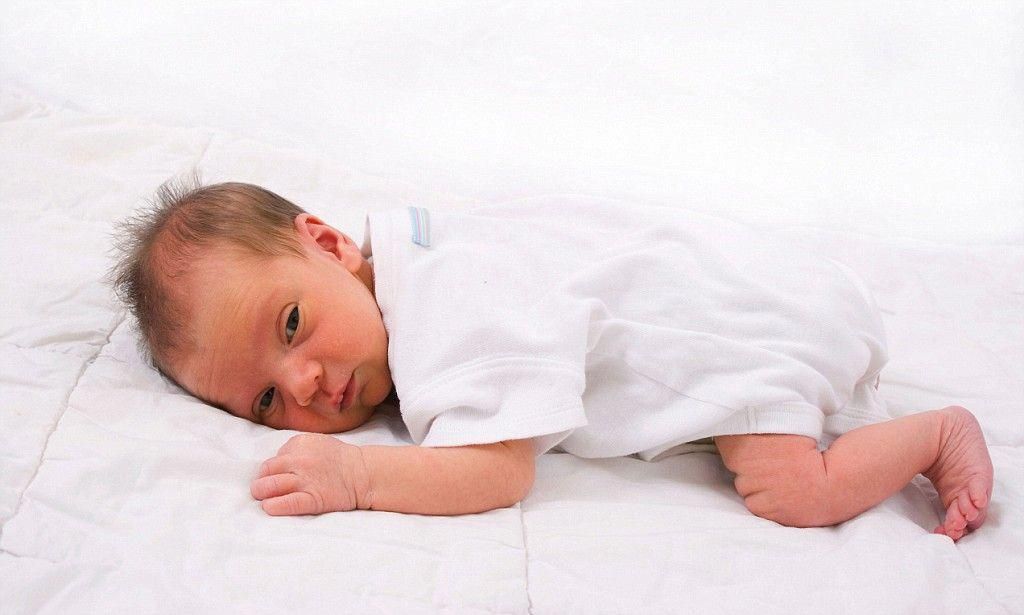 To establish that the product manufacturers addressed safety and efficacy standards, we:
To establish that the product manufacturers addressed safety and efficacy standards, we:
- Evaluate ingredients and composition: Do they have the potential to cause harm?
- Fact-check all health claims: Do they align with the current body of scientific evidence?
- Assess the brand: Does it operate with integrity and adhere to industry best practices?
We do the research so you can find trusted products for your health and wellness.
Read more about our vetting process.A person’s eyes produce mucus or pus known as rheum that leaves behind what are colloquially called eye boogers.
When mucus dries in the eyes, it can leave behind this sludgy substance. Some people refer to it as having “sleep” in the eyes.
Mucus helps protect the eyes from specks of dirt, harmful chemicals, and other foreign materials. Eye boogers are harmless, but changes in discharge from the eyes can give clues to health concerns someone may have.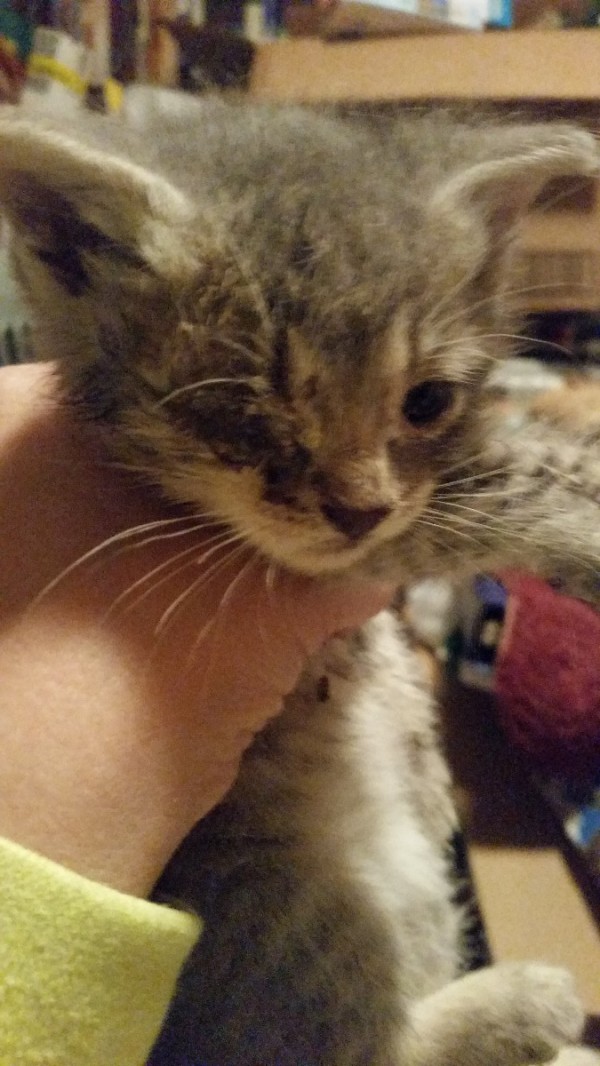
Eye boogers refer to a buildup of mucus in the eyes.
During the day, each time a person blinks, the eyes flush away the secretions of rheum they have produced. Since the eyes produce this mucus in such small quantities, most people never notice it.
At night, when a person does not blink, the mucus can build up. Sealed eyelids allow it to build up along the eyelashes and in the tear ducts.
Everyone produces the mucus that causes eye boogers. This is normal in healthy eyes. However, some changes in lifestyle or eye health may cause the eyes to produce excess mucus. These changes can also make it more likely that the rheum sticks to the eyes.
Causes of excess mucus include:
- Eye products: Some eye products, such as cosmetics or contact lenses, may irritate the eyes and cause them to produce more mucus.
- Dirt and debris near the eyes: When the eyes have accumulated debris around them, such as when a person sleeps without cleaning off mascara, they can become irritated.
 The eyes will produce extra mucus that can then get trapped in the eyes and on the eyelashes.
The eyes will produce extra mucus that can then get trapped in the eyes and on the eyelashes. - Changes in the weather or climate: Some people produce more discharge at certain times of the year, such as during allergy season or cold weather.
Healthy rheum is clear or light yellow. It may be hard, sludgy, or thin after sleeping, but should not be noticeable during the day.
If the mucus is very thick, green, dark yellow or occurs with pain or redness in the eyes, it could be a sign of an eye infection. Anyone with these symptoms should see an eye doctor quickly.
Share on PinterestPink eye or conjunctivitis may cause discharge or irritation.
In addition to healthy mucus, there are many other types of eye discharge. Some infections and eye health conditions may cause abnormal or painful eye discharge.
Types of eye discharge include:
- Conjunctivitis or pink eye: Pink eye causes the eye to be red and irritated.
 There may be green, white, or yellow discharge. Some people feel like something is trapped in the eye. This can be caused by bacteria, virus, or an allergic reaction.
There may be green, white, or yellow discharge. Some people feel like something is trapped in the eye. This can be caused by bacteria, virus, or an allergic reaction. - Bacterial conjunctivitis or other eye infections: Some forms of conjunctivitis are bacterial and require antibiotics. These infections can make the eye pink and swollen, painful, and may cause a fever.
- Stye or chalazion: Styes and chalazia are blocked glands in the eyelids. They usually cause a swelling or lump. They can be painful and itchy but usually go away on their own with warm compresses.
- Eye injury: An injury to the eye, such as a scratched cornea, can cause the eye to swell and itch. It may feel as if there is something in the eye. If the injury becomes infected, there may be thick discharge.
- A blocked tear duct: This can cause sticky, thick eye mucus, and may be painful.
- An object in the eye: Contact lenses can dry up and become stuck in the eye and may roll near the top of the eyelid.
 An eyelash or other small object can also irritate the eye. The eye will become very watery and tender and may be sensitive to light and produce mucus.
An eyelash or other small object can also irritate the eye. The eye will become very watery and tender and may be sensitive to light and produce mucus.
Babies produce eye mucus and may develop eye infections. A baby who has eye discharge similar to that of an adult is usually healthy, however.
Some newborns have tear ducts that are not fully developed. This can cause the ducts to become blocked. Babies with blocked tear ducts may have green or yellow mucus all day and not just when they wake up. This can usually be managed at home with warm compresses.
If the eye becomes tender, red, or swollen, the baby may have an infection and will need to see a doctor.
Children whose blocked tear ducts do not improve by their first birthday may need surgery to open the tear duct.
Share on PinterestUsing eye drops may help to treat and prevent eye boogers caused by dry eye.
Most eye boogers are a sign that the eye is healthy and that it is getting rid of dirt and debris.
Good eye hygiene, including removing makeup at night and keeping the eyes clean by wiping the closed eyes with a clean, warm washcloth, can help reduce the eye discharge.
In people with dry eyes, eye drops may also help. Eye drops from different brands are available online, though speaking with a doctor before purchasing is recommended to ensure the product is safe to use.
People with contacts lenses who want to reduce their eye boogers should remove their contacts at night. They should also replace their contacts as directed by their eye doctor and use the appropriate solutions to clean their lenses.
Some people notice more eye boogers after sleeping. A warm compress held over the eyes for 3–5 minutes can help loosen the mucus.
If there is enough discharge to cause the eyelids to stick shut in the morning, a person should speak to an eye doctor to rule out an infection.
Eye boogers are normal and not a sign that something is wrong. Some eye infections also cause similar symptoms, however, so it is important to know the difference between normal and harmful eye discharge.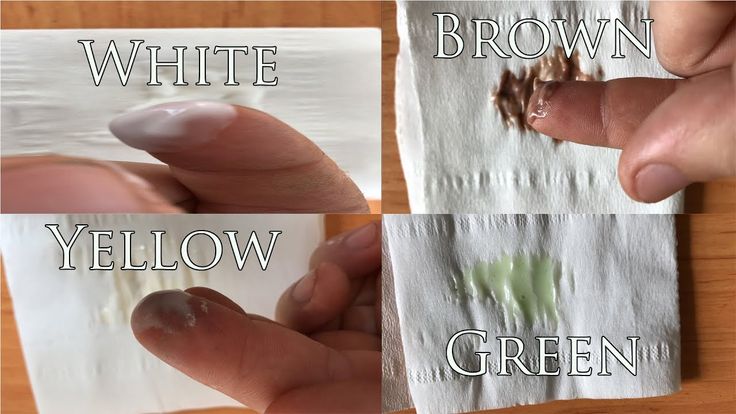
Prompt treatment of an eye infection can prevent it getting worse. It may even save a person’s vision.
Some signs that eye discharge could be a problem include:
- a sudden change in discharge
- painful discharge
- red eyes
- discharge after an eye injury
- pain in the eyes
- light sensitivity
- changes in vision
The eyes must constantly protect themselves from invading materials, including dust, dander, mascara, and pet hairs. By producing a healthy discharge, the eyes clean themselves and reduce the risk of infection.
A person can help keep their eyes healthy by monitoring eye discharge. Knowing what is normal can help people decide when to see an eye doctor.
Discharge from the eyes of a newborn: norm and deviations
We all know that most newborn babies have blue eyes immediately after birth. However, already about a month after birth, it gradually begins to change. For many babies, this can happen as early as day 10, but for some, the process can take up to 6 months. Depending on the genes laid down by the parents. Immediately after childbirth, the eyes of babies may be red, but this should not be frightened. This effect is due to hemorrhages of bursting vessels during labor. This symptom does not need special treatment and will pass by itself within 2-4 weeks, you will not pay attention to how. Next, let's talk about what is normal discharge from the eyes of newborns and when their color and consistency change. nine0003
Depending on the genes laid down by the parents. Immediately after childbirth, the eyes of babies may be red, but this should not be frightened. This effect is due to hemorrhages of bursting vessels during labor. This symptom does not need special treatment and will pass by itself within 2-4 weeks, you will not pay attention to how. Next, let's talk about what is normal discharge from the eyes of newborns and when their color and consistency change. nine0003
Drops for conjunctivitis for newborns: a review of drugs that...
Pus in the eyes of a child is an alarming symptom that indicates that your child is sick...
What discharge is normal?
After his birth, the child faces a new unknown world, in which everything is unfamiliar, alien to him. Due to his age, he is not yet ready for some difficulties and realities. Any infectious disease that is not dangerous for an adult can cause a serious illness in a child in the first days of life. Fortunately, many diseases pass without a trace, as it is possible to successfully cure them. Unfortunately, children of the first years of life cannot say what specifically worries them. That is why young parents need to pay special attention to the behavior of the child. If the baby begins to rub his eyes often, then this is a reason to be wary. nine0003
Unfortunately, children of the first years of life cannot say what specifically worries them. That is why young parents need to pay special attention to the behavior of the child. If the baby begins to rub his eyes often, then this is a reason to be wary. nine0003
At 1.5-2 months, in exceptional cases at 4, babies begin to shed tears.
What are tears for?
It has been known since school days that tears wash the eyeball, thus preventing it from drying out and protecting it from various bacteria and harmful viruses. Those discharges that we observe in almost everyone in the morning in the corners of the eyes are accumulated tears. If the lacrimal canal works normally, then it has good patency and does not interfere with the fluid path. However, if it is still closed, then we see how tears accumulate and overflow over the edge of the lower eyelid, they no longer carry a bactericidal function, the eyes become inflamed and redden, and then the process of suppuration begins.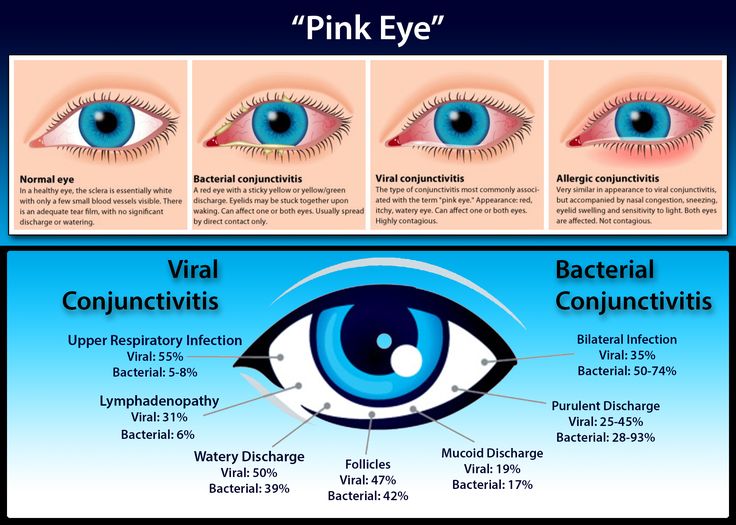 nine0003
nine0003
Is a festering eye in a newborn a cause for alarm?
A festering eye in a newborn is a reason to seek medical help, because the consequences ...
With the appearance of tears in a newborn, congestion in the nasolacrimal canal may begin. In 5% of 100% of children, this channel is closed. However, under the influence of children's tears, this "plug" resolves on its own during the first day of a child's life and does not prevent tear secretion.
Abnormal discharge
Parents are worried if their newborn baby has eye discharge that they do not understand. The main thing here is to find out their root cause. There may be a small number of reasons for such discharge, but it is necessary to take this symptom very, very seriously and consult a doctor in time. The very first and most necessary thing you can do if you find discharge from the eyes of a child is to make an appointment with an ophthalmologist so that he directly makes the correct diagnosis, and you can begin the correct necessary treatment. nine0003
nine0003
Discharge from the eyes of a newborn is classified according to the following types.
Allergic reaction
If the discharge from the eyes of a newborn is white, clear or whitish and very similar to the tears of a child, this may be a symptom of an allergic reaction. In addition, redness and swelling, irritation of the mucous membrane and severe unbearable itching may be present. However, if such “tears” are not removed, they tend to dry out and turn into thin, flaky films. Medical treatment for such symptoms is vital! Parents should make an appointment with the doctor immediately. The doctor will identify the root cause, that is, the allergen to which the reaction occurred, and prescribe the treatment you need, the basis of which will be to protect the child from the allergy causative agent, and it will be necessary to drink a course of antihistamines. nine0003
Eye diseases in a child: possible causes, symptoms and...
There are many eye diseases that occur in a child.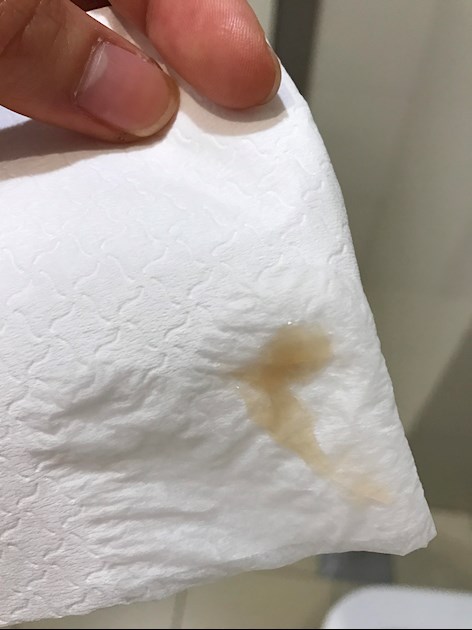 The task of parents is...
The task of parents is...
Conjunctivitis
If purulent discharge from the eyes of a newborn child appears, then this is most likely conjunctivitis. Little kids get sick quite often, unfortunately. It is bacterial and viral. In order to start treatment, there is a need to undergo an analysis and identify the cause of its origin. Often, with conjunctivitis of a bacterial nature, pediatric ophthalmologists first of all prescribe washing to a sick child, however, if this method does not help, then antibiotics are prescribed. nine0003
Viral conjunctivitis is treated with antiviral drugs.
Dacryocystitis
If parents find green or yellow discharge from the eyes of newborns, then this may be a symptom of the onset of purulent conjunctivitis or even dacryocystitis. The last pathology is inflammation or complete blockage of the lacrimal canaliculus and sac.
When dacryocystitis is detected, to help a sick child, the lacrimal canaliculus is first massaged, which contributes to its opening. However, if the situation has not changed before the child is six months old, surgery is often required to open the canal, during which, if necessary, doctors use general anesthesia. nine0003
However, if the situation has not changed before the child is six months old, surgery is often required to open the canal, during which, if necessary, doctors use general anesthesia. nine0003
In some cases, yellow discharge from the eyes of newborns does not stop even after surgery. If this does happen, you will also need additional medical treatment with antibiotics. This disease can have a protracted acute chronic form. That is why it is necessary that the treatment is supervised by a professional.
Blepharitis
If crusts or scales are found in the eyes of a newborn child, adults should immediately pay attention to this and not ignore this sign of the disease. Perhaps this is a symptom of blepharitis (inflammation of the eyelids). This childhood disease is characterized by a chronic course. Blepharitis is a disease that, under conditions of home treatment, is practically not treatable in chronic neglected conditions. There is no need to harbor the unreasonable hope that you yourself can handle it at home. If you notice symptoms of blepharitis in your child, you should urgently consult a doctor and start drug therapy and in no case engage in dangerous self-medication. nine0003
If you notice symptoms of blepharitis in your child, you should urgently consult a doctor and start drug therapy and in no case engage in dangerous self-medication. nine0003
Any discharge from your child's eyes that adults do not understand can be one of the very dangerous symptoms. That is why, for all conscious parents, the importance of a quick reaction and a timely visit to the doctor is emphasized. After all, this is the health of your child, which you can not buy for any money. Only your attentiveness as a mother or father can save the baby from many complications when he grows up.
Cause of discharge in a child
What are the causes that can affect the occurrence of discharge from the eyes in children? Let's figure it out. nine0003
- The first and very important reason is the infection of the child in the womb or during passage through the birth canal. The most common infectious eye diseases in children of the first days of life are blepharitis and purulent conjunctivitis.

- Gross non-compliance with hygiene rules in the maternity hospital or after discharge at home. Contact with patients. Physical injury.
- Symptom of concomitant disease. In young children, any disease can be accompanied by inflammation of the eye and various secretions. As a separate point, it should be noted that this may be a symptom that accompanies any other infectious disease, such as diphtheria. nine0067
- Eye discharge can also be caused by an allergy of unknown cause. That is why it is worth emphasizing once again the importance of timely access to a pediatric ophthalmologist.
- The next reason has already been described above - blockage of the lacrimal canal, hence the presence of dacryocystitis as a consequence. Sometimes, in order to get the desired positive effect, gentle massage and drugs prescribed by a doctor are enough. However, this, unfortunately, does not help everyone and one has to allow surgical intervention. nine0067
- Separately, it is worth noting pathological disorders in the work of the lacrimal canal, physiological anomalies, the presence of malignant and benign cysts and tumors, malignant tumors of the pituitary gland, pathologies of the nervous system.

- This item can be attributed to human negligence or non-compliance with basic hygiene rules. Sometimes a foreign body (eyelash, mote, villus, midge, etc.) may get into the child's eye. Thus, an infection is introduced, a gross mechanical damage to the mucosa occurs, and an inflammatory process begins. nine0067
If a foreign body is found in the child's eye, and if inflammation has already begun, the removal of the object should be entrusted to a qualified doctor.
Tips
Parenting Guide for Newborns:
- It is important to visit a pediatric ophthalmologist in order to monitor the condition of the eyes of a newborn and monitor the correct development of the organs of vision.
- The very first visit should be no later than 1 month after birth. At this time, the doctor can determine the child's ability to see, assess the formation of the eyelids, the patency of the lacrimal canal, the mobility and transparency of the eyes. nine0067
- A visit to the doctor at 6 months will help determine the condition of the retina and the possibility of refraction.

- At 1 year, the presence or absence of strabismus can be determined.
- At the age of 3, when the little man is already acquiring the skill of speaking, it is possible to determine visual acuity.
How to prevent illness
To prevent eye diseases in newborns, or if your child is already unwell, a high level of hygiene is essential. As for children's bedding, pillowcases must be changed daily. Under the head of newborns, it is necessary to put a thin cotton diaper well-ironed with an iron. The eyes themselves must be washed with the frequency that the pediatrician prescribed for you. Follow all doctor's recommendations. In order for the child of the first days of life not to rub his eyes once again, he needs to wear special ironed cotton mittens on his hands. nine0003
Eye wash
How to treat discharge from the eyes of a newborn? Komarovsky advises to pay attention to the following. After a night's sleep in a small child, the cilia usually stick together, and he has difficulty opening his eyes.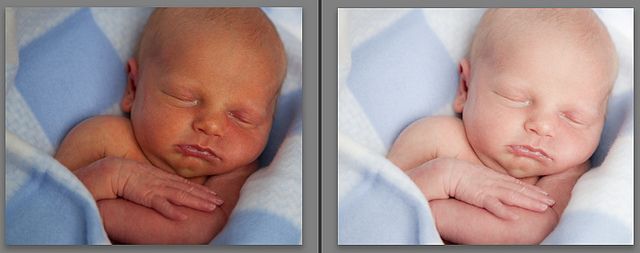 It is recommended to prepare a special liquid for washing the eyes before waking up the child. Existing secretions must be gently soaked and then carefully removed. Before you perform any manipulations with the eyes of a newborn, you yourself need to thoroughly wash your hands. Items that are used must be sterile. nine0003
It is recommended to prepare a special liquid for washing the eyes before waking up the child. Existing secretions must be gently soaked and then carefully removed. Before you perform any manipulations with the eyes of a newborn, you yourself need to thoroughly wash your hands. Items that are used must be sterile. nine0003
Walking while sick is not forbidden, but contact with other people should be limited. Conjunctivitis is very easy to get infected.
For the health of the baby, the room must be regularly ventilated without drafts. In addition, it is important to try to keep the baby on breastfeeding. Mom's immunity in the first days of a baby's life is his greatest defense against all diseases.
Why there is mucus in the eyes. How to treat eye discharge in a child.
From All About Vision
Eye discharge is a combination of mucus, fat, skin cells, and other particles that accumulate in the corners of the eyes during sleep." They may be wet and sticky or dry, depending on how much fluid has evaporated.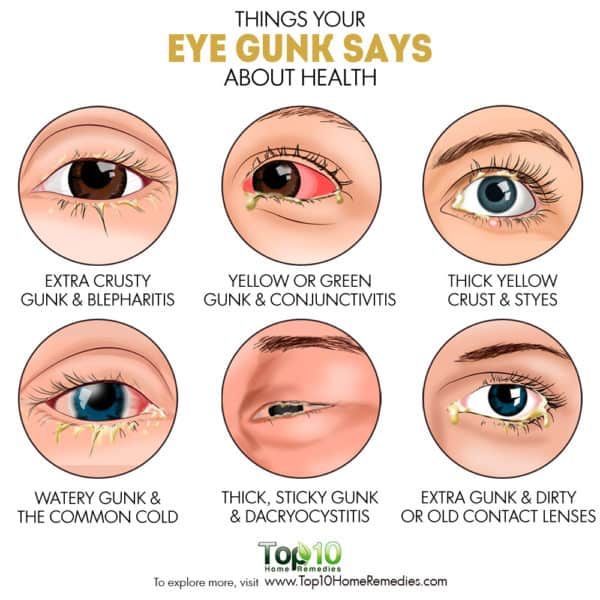
Mucous secretions have a protective function, flushing waste products and potentially dangerous particles from the tear film and front of the eye
Throughout the day, the eyes secrete mucus, but the constantly present tear film bathes your eyes with every blink, removing secretions before they have time harden
When you sleep and do not blink, the discharge accumulates and dries up in the corners of the eyes, and sometimes along the lash line. ""
Some discharge from the eyes after sleep is absolutely normal, but excessive discharge, especially green or yellow accompanied by blurred vision, sensitivity to light , or eye pain may indicate a serious eye infection or eye disease. Therefore, you should immediately contact an optometrist. nine0003
FIND AN OCULIST OR OPTICS SHOP NEAR YOU : Whether you need an eye exam or are ready to buy eyeglasses or contact lenses, our locator will help you find a safe place nearby.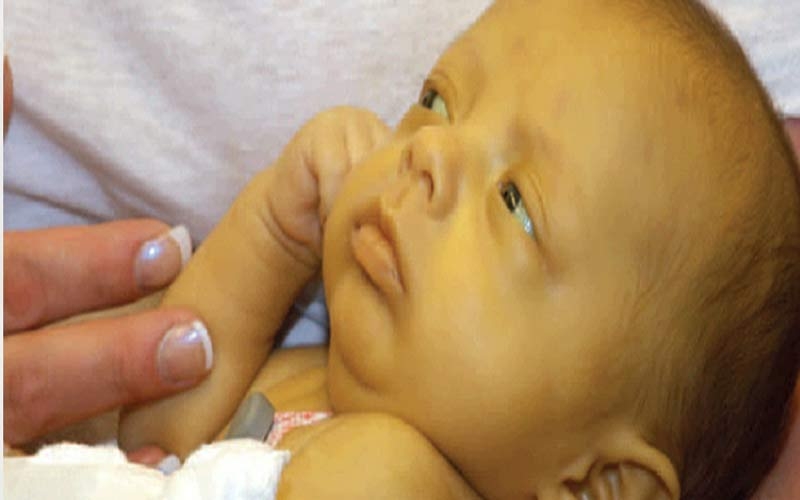
Where does eye discharge come from?
The discharge from the eyes consists mainly of a watery mucous secretion (mucin) produced by the conjunctiva and the secretion of the meibomian glands, an oily substance that helps to moisten the eye between blinks. nine0003
Those impurities that are not washed away by tears accumulate in the inner corners of the eye and along the lash line. ""
Causes of discharge from the eyes the consistency, color, or amount of discharge, this may indicate an infection or eye disease.
Common eye conditions with abnormal eye discharge include:
Conjunctivitis. Discharge from the eyes is a common symptom Conjunctivitis Inflammation of the thin membrane that lines the "alkaline" of the eye (the sclera) and the inner surface of the eyelids.
In addition to itching, stinging, irritation and redness of the eyes , conjunctivitis is usually accompanied by white, yellow or green mucus that may form a crust along the eyelash line during sleep. In some cases, the crust formed on the eyelid can be so dense that it does not allow you to open your eyes. nine0003
In some cases, the crust formed on the eyelid can be so dense that it does not allow you to open your eyes. nine0003
There are three types of conjunctivitis:
Viral conjunctivitis
Viral conjunctivitis is highly contagious and is caused by the common cold or herpes simplex virus. Eye discharge from viral conjunctivitis is usually clear and watery, and may include white or yellowish mucus.
Bacterial conjunctivitis
Bacterial conjunctivitis, as the name suggests, is caused by a bacterial infection. If not promptly treated, it can pose a threat to vision. Eye discharge from bacterial conjunctivitis is usually thicker and purulent (like pus) than from viral conjunctivitis, and is usually yellow, green, or even gray in color. In the morning after sleep, patients often cannot open their eyelids, which are completely stuck together with secretions. nine0003
Allergic conjunctivitis
Allergic conjunctivitis is triggered by allergens - pollen, dandruff, dust and other common irritants that cause eye allergies .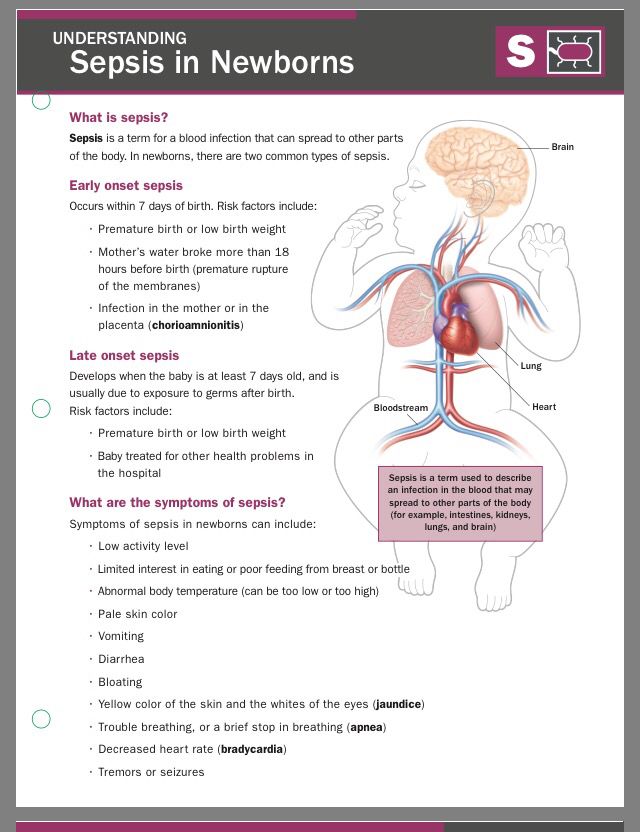 It can also be caused by an allergic reaction to chemical pollutants, cosmetics, contact lens solutions, and eye drops. In allergic conjunctivitis, the discharge from the eyes is usually watery. Allergic conjunctivitis is not contagious and always affects both eyes.
It can also be caused by an allergic reaction to chemical pollutants, cosmetics, contact lens solutions, and eye drops. In allergic conjunctivitis, the discharge from the eyes is usually watery. Allergic conjunctivitis is not contagious and always affects both eyes.
Other eye infections
In addition to conjunctivitis, there are many eye infections that cause abnormal eye discharge. For example:
-
Herpes ocularis (recurrent viral eye infection)
-
Fungal keratitis (a rare but serious inflammation of the cornea)
-
while wearing contact lenses). nine0003
The discharge from an eye infection varies greatly - it can be clear and watery or thick, green and sticky, so you should see an eye doctor as soon as possible for diagnosis and treatment.
Blepharitis
Chronic disease of the eyelids, blepharitis, is either an inflammation of the eyelash hair follicles or an abnormal secretion of the meibomian glands at the inner edge of the eyelids.
Meibomian gland dysfunction
Also called MGD, this sebaceous gland disorder in the eyelid can cause foamy discharge from the eyes, sticky eyelids, yellow or green pus, and irritation and pain.
Barley
Barley is a blockage of the meibomian gland at the base of the eyelid, usually caused by an infected eyelash follicle. Also called hordeolum, it resembles a pimple at the edge of the eyelid and is usually accompanied by redness, swelling of the eyelids, and tenderness at the site of the lesion. Yellow pus, sticking of the eyelids, and discomfort when blinking may also occur. nine0003
SEE. ALSO: How to Get Rid of Styes
The tear duct system provides moisture and protection to the eyes.
Dry eye
Insufficient tear production or meibomian gland dysfunction can lead to dry eye syndrome , a frequently chronic condition in which the surface of the eye is not properly lubricated, becoming irritated and inflamed.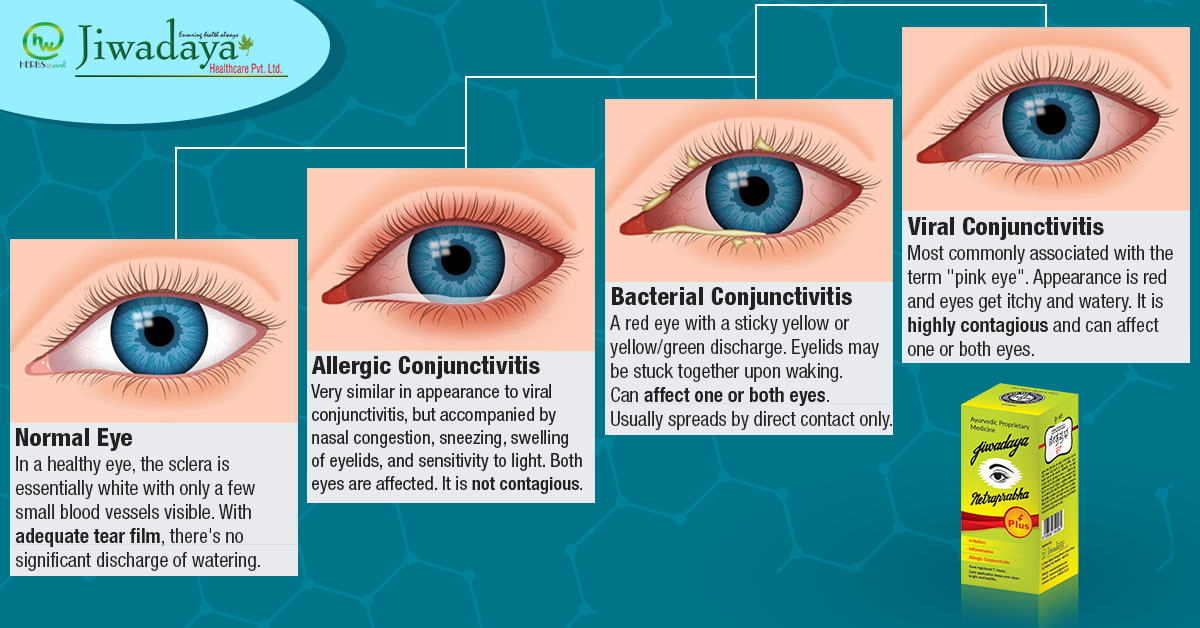 Symptoms include reddened, bloodshot eyes, a burning sensation, blurred vision, and a foreign body sensation in the eye. "" Sometimes dry eyes can also cause very heavy watering. nine0003
Symptoms include reddened, bloodshot eyes, a burning sensation, blurred vision, and a foreign body sensation in the eye. "" Sometimes dry eyes can also cause very heavy watering. nine0003
Contact lenses
When wearing contact lenses, there may be more discharge from the eyes than usual. This can be due to a variety of reasons, including eye infection from contact lens wear, contact lens discomfort resulting in dry and irritated eyes, and contact lens wearers rubbing their eyes more frequently. If you notice more discharge due to contact lenses, remove your lenses and see an optometrist to rule out a potentially serious eye disease. nine0003
Eye injury
A foreign body in the eye (such as dirt, particles or a chemical) or eye injury may cause watery discharge as a natural defense reaction. If you notice pus or blood in your eye (subconjunctival hemorrhage) after an eye injury , contact your optometrist immediately for treatment. All eye injuries should be treated as an emergency.
All eye injuries should be treated as an emergency.
Corneal ulcer
A corneal ulcer is a vision-threatening, abscess-like infection of the cornea, usually caused by trauma to the eye or an advanced eye infection. If left untreated, corneal ulcers can lead to permanent vision loss. Corneal ulcers are characterized by pain, redness, swelling of the eyelids, and thick discharge from the eyes. The discharge of pus can be so strong that it causes clouding of the cornea and blurred vision.
Dacryocystitis
When the tear duct is blocked, inflammation and infection of the lacrimal sac in the drainage system of the lacrimal apparatus can occur, resulting in a painful and swollen bump under the inner eyelid. In addition to pain and redness, common symptoms of dacryocystitis include watery eyes, sticky discharge from the eyes, and blurry vision. nine0003
Eye discharge treatment
A small amount of eye discharge is harmless, but if you notice changes in color, frequency, consistency and quantity, contact your optometrist.
If mucus in the eyes is due to an eye infection, the optometrist may prescribe antibiotics or antiviral eye drops and ointments. If an eye allergy is causing watery eyes and irritation, over-the-counter antihistamine eye drops and decongestants may help relieve symptoms. nine0003
Warm compresses help soothe itching and general discomfort, and remove discharge from the eyes.
For sticky eyelids, soak a kitchen towel in warm water and place it over your eyes for a few minutes, then gently wipe the discharge."
Home Checklist from them:
Avoid touching your eyes to avoid getting or spreading an eye infection.0003
Wash your hands often, especially if you have contagious conjunctivitis.
If you experience bleeding while wearing contact lenses, remove your lenses and see your optometrist. Sometimes switching to disposable contact lenses can reduce the risk of associated discharge.
If you have an eye infection, discard any cosmetics that can cause infection, such as mascara and eyeliner.
